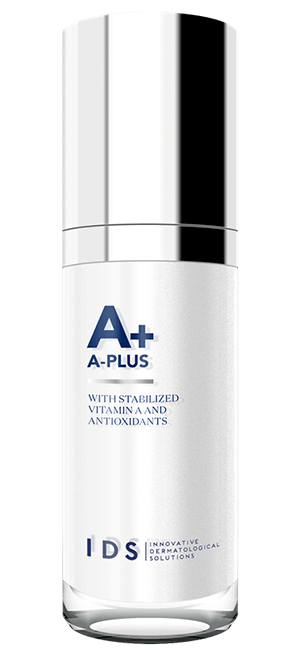
In an interview a long long time ago, Pharrell Williams (yes, the Happy guy) mentioned that he only uses serums after some sagely advice from Naomi Campbell.
If you watch any of Naomi Campbell’s skincare routine videos, you’d realise that she really, really loves her serums — just one product besides her bizarre love for Swedish Fish and gallons of sanitiser.
But, when did moisturising creams become the prodigal son of a highly regimental skincare routine? Also, when did we forget about the benefits of using a facial cream?
Here, Dr Ian of IDS Clinic sets it straight. Literally, he has broken it down for any of us who have failed chemistry or are still stubborn about using creams.
—
Hi Dr Ian! First things first, why do we think that creams are always heavy? Is it a marketing gimmick?
I’ve got to admit I was stumped by this first question. I can’t really explain why we tend to think that creams are heavy when we don’t use a weighing scale to determine if a facial product is lightweight or heavyweight!
I guess this has to be attributed to the marketing that seems to have driven home the idea to consumers that creams are “heavy” while serums are “light”.
—
Creams versus gels versus emulsions — can you break each of them down for us in a simple-to-understand way?
A cream is a water-in-oil emulsion while a gel is an oil-in-water emulsion.
Most people would have heard that “oil and water don’t mix.” Truth is, oil and water can be mixed with the right additions – specifically emulsifiers.
Emulsifiers prevent the oil phase and water phase from separating by establishing a barrier that protects the droplets, by so doing, they form an emulsion.
An emulsion is thus defined as a two-phase system which consists of two completely immiscible or partially miscible liquids — one being dispersed in the other in the form of very fine droplets.
An emulsion may also be one of two types. The first type would consist of very small droplets of oil dispersed in water and this type of emulsion is known as an oil-in-water emulsion, example: a gel.
The other type of emulsion therefore contains very small droplets of water dispersed in oil and is known as a water-in-oil emulsion, example: a cream.
—
Can people with oily skin reap the benefits of using a facial cream? How are those creams usually formulated and what are the benefits of using a facial cream that has said formulation?
Yes. Depending on the formulation, some creams can be used for oily skin as well. Importantly, make sure they are non-comedogenic, meaning they won’t clog pores.
These creams should contain actives that help tackle seborrhoea and acne.

An example of such a cream is the IDS A+ which I often recommend for patients with oily skin. It contains two main active ingredients, namely retinaldehyde and niacinamide.
Niacinamide is able to reduce sebum production and also inhibits P. acnes activity on the skin.
Retinaldehyde has comedolytic, anti-inflammatory effects and it normalises follicular keratinization.
—
Regarding the benefits of using a facial cream, are there any that are one size fits all? If so, how? If not, why?
No. We all hope for creams that are one size fits all and able to cure all problems but I think it’s important to emphasise that skincare just simply isn’t one size fits all.
Despite your friend, family member or your favourite online or onscreen personality claiming to have amazing results with a specific product really doesn’t mean that you will achieve the same magical outcome.
Everyone’s skin condition is different so it’s important to recognise that every individual will experience different results.
—
Are there common problems you’ve noticed in the male patients you’ve treated?
A man’s skin is just as susceptible to the ravages of time and the environment as a woman’s skin is. What you can see in a female skin, you can see in a male as well.
The common problem in male patients is oily skin (seborrhoea) which is often also associated with acne and acne scars.
Ultraviolet rays and high-energy visible light damage skin can lead to a whole array of problems that is manifested on the skin.
As most guys lack the patience to apply sunblock and skincare, they tend to present more sun-related problems such as pigmentation, fine lines and wrinkles earlier as well.
—
—
What do you notice in a patient before prescribing a cream?
There are a set of things to ask and do before I recommend a cream or facial product. As a doctor, I have to try to take a thorough relevant skincare history.
Things I often ask are:
1. Medical history including allergies and any long-term medications.
2. What are the products the patient is currently using.
3. Which clinics or doctors they have recently visited, what was prescribed for them whether it be topicals or oral medications or even treatments, and in doing so, have an idea of what worked for them and what did not.
4. Finally, I explore their ideas, concerns and expectations when it comes to skincare and their looks.
This is then followed by a physical examination, where I use a simple mnemonic — SHAPES — to aid me in forming a preliminary diagnosis of the patient’s skin condition. Seborrhoea, Hydration status, Acne, PIH (post inflammatory hyperpigmentation), Erythema, Scars.
—
Over the counter products versus IDS products; I know you’ll recommend the latter but why? What is the science and benefits of using a facial cream from IDS Clinic itself?
There is a high concentration of evidence-proven, effective, active ingredients in IDS skincare products.
The concoction of active ingredients in IDS products have been extensively researched and carefully formulated at a higher medical grade concentration in order to deliver the optimal results.
Some OTC products may boast of the same but often do not live up to their marketing and advertising claims despite containing the right active ingredients which have been proven to be effective in laboratory tests.
OTC products are often advertised as a “one size fits all” or “one product cures all”. As earlier alluded to in the previous reply, everyone’s skin is unique and requires a relatively personalised care. What works for one individual may cause problems for the next. To circumvent this problem, though certain active ingredients may be present in the OTC product, their concentrations are often relatively low and not as potent.
Not only are these actives less potent, the formulations may not be able to deliver the active ingredients into the appropriate layers of the skin in order for them to exert their therapeutic effects and the actives merely sit on the skin’s surface, or penetrate in minute non-therapeutic amounts.
However, IDS incorporated our patented ‘ENHANCE’ Transcutaneous Delivery System’ into some products such as Rejuvenating complex and pore formula. By doing so, the active ingredients are able to penetrate and be delivered into the target areas at therapeutic concentrations.
One more point to add is that OTC products often contain fragrances. While fragrances might make a product smell better, at IDS, we try not to include them. Why does the lack of fragrance make IDS products a better choice? Fragrances are mostly made of essential oils and aromatic chemicals. But does one really know what exactly are the fragrances that are listed on your skincare product packaging? No.
Skincare products are required by the law to have an ingredient list printed on the packaging and this law was enacted to ensure customer safety and allow consumers to make informed decisions. However, if the chemical components of a fragrance are considered a “trade secret,” they do not need to be disclosed to the public.
This means that cosmetic companies do not need to directly label every ingredient used within that product and instead hide hundreds of chemicals under the word “fragrance”. With potentially hundreds of chemicals hiding behind the umbrella term of “fragrance” in a skincare product, the probability of getting allergies and sensitivities increases significantly.
—
Lastly, do you have any dermatologist jokes?
Why was the dermatologist fired? He was making too many rash decisions.
—
We are offering free Magzter subscriptions to Men’s Folio so if you’re bored, listless or sick of doing your job, click here to subscribe!








